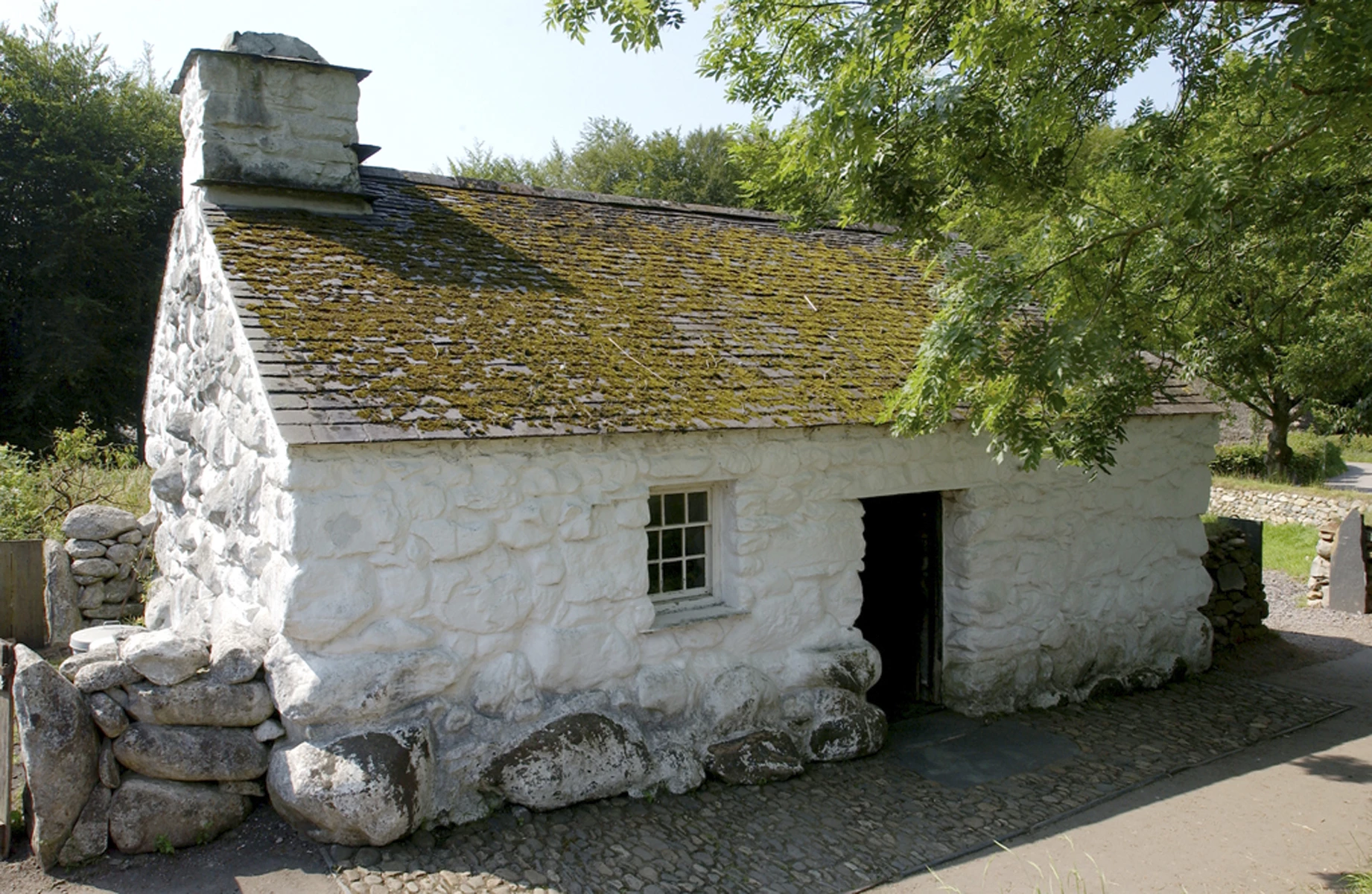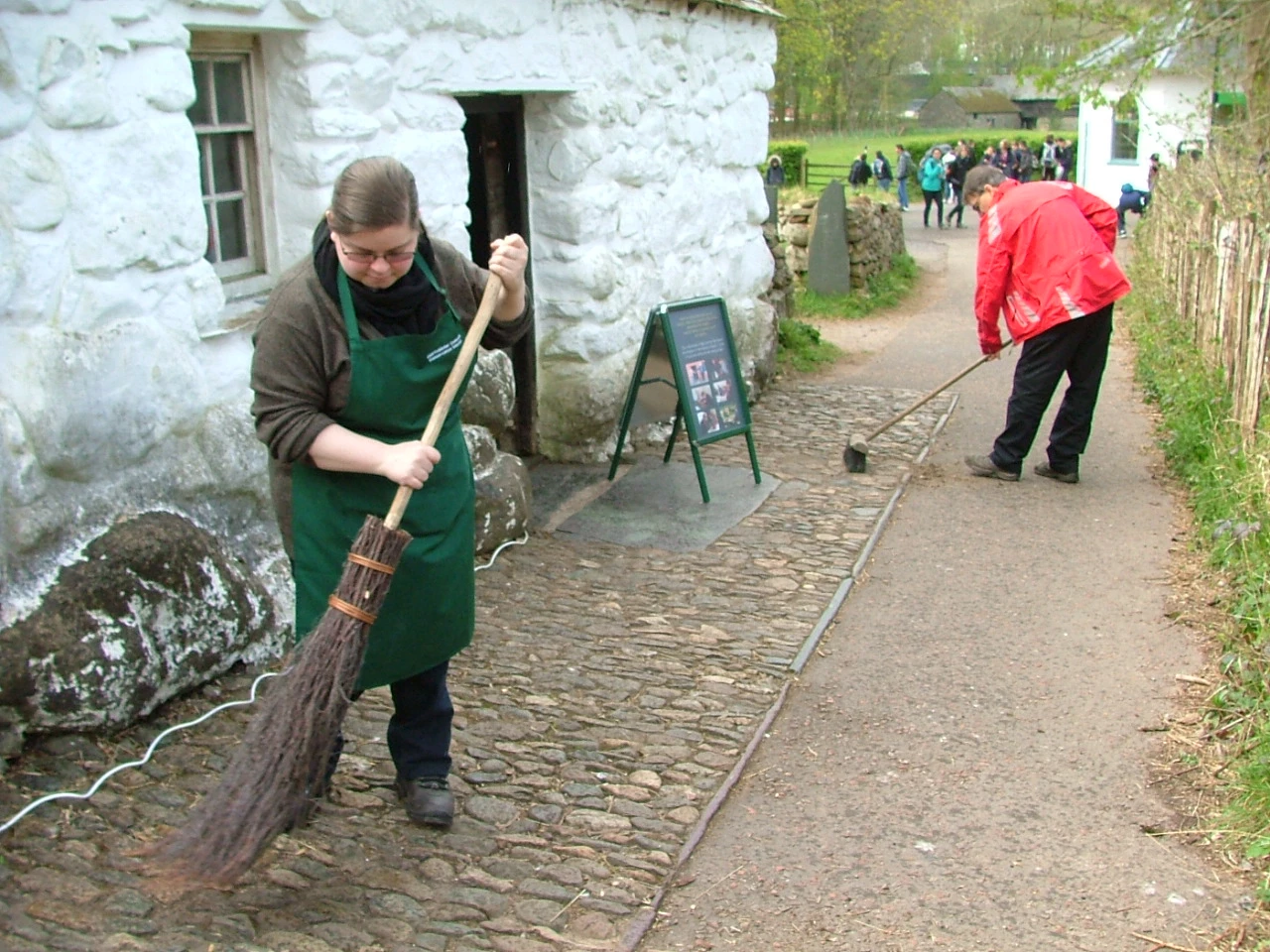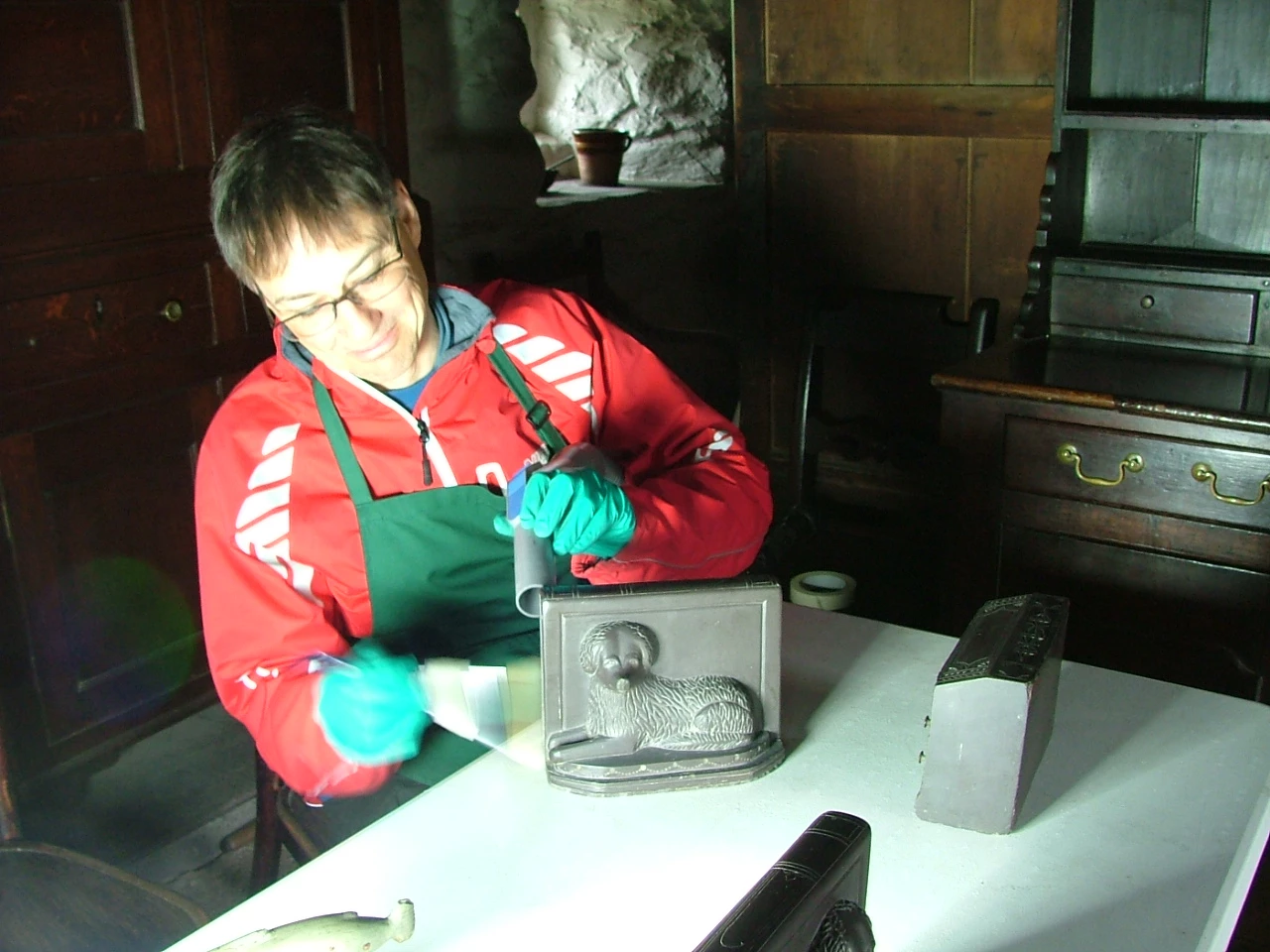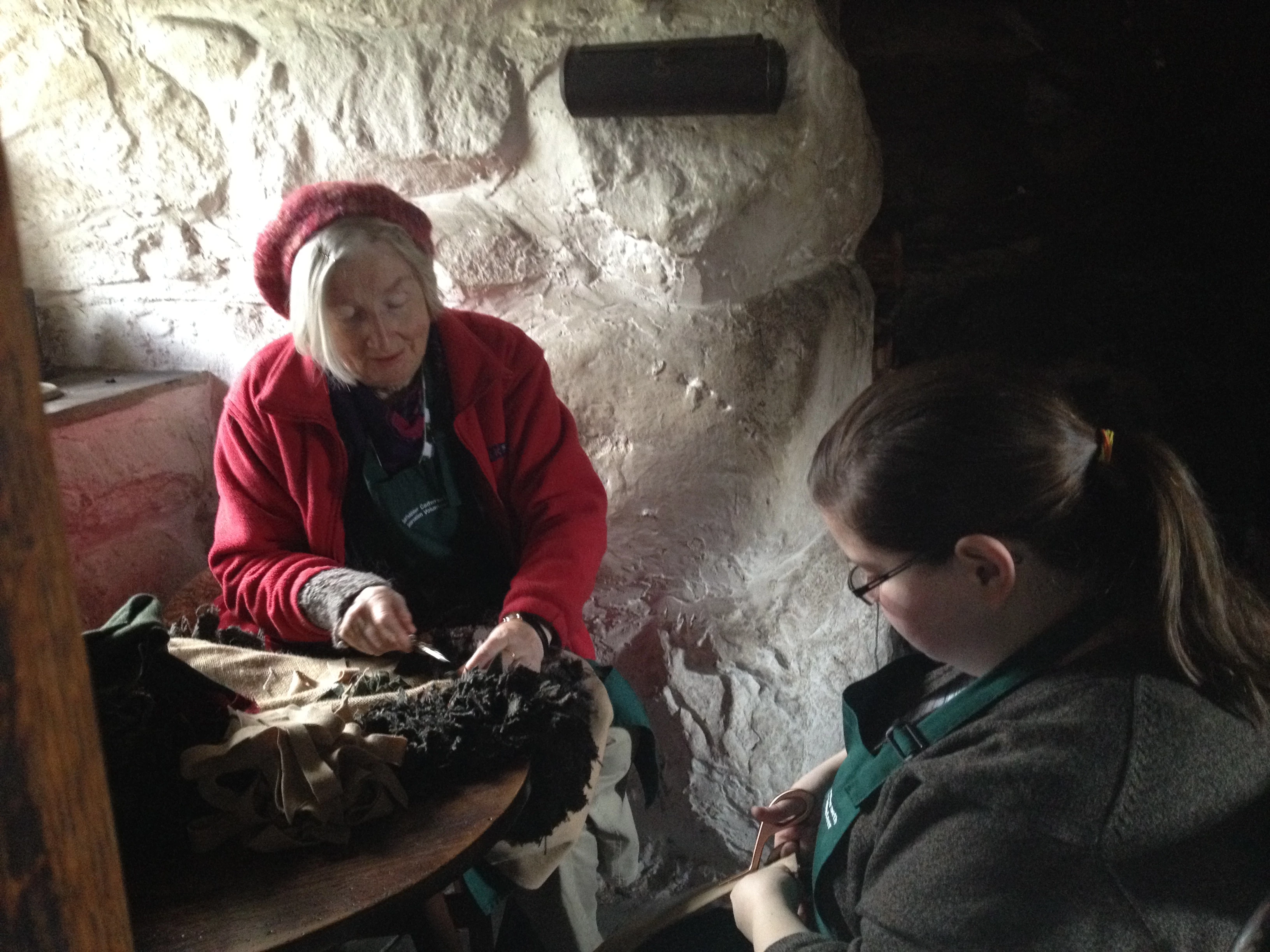The Recent Story of Bryn Eryr!
, 7 Mehefin 2016
Our new Iron Age farmstead, Bryn Eryr, holds a recent story as well as the fantastic histories connected to it. Over the last few years over 2,000 volunteers have been working quietly at St Fagans Museum building it from the ground up. Our volunteers, with our staff, have debarked the wood for the walls and roof, built the clay walls, grown the spelt for the thatch and have even thatched the roof. It has truly been built from the ground up by the volunteers!
You may think we have finished, but that’s only half the story; since the building has been completed many volunteers have been helping us decorate the inside: our Youth Forum have recently helped us build an Iron Age bread oven, staff from across different departments have helped us build a loom, and over 1,000 visitors have helped us make string out of stinging nettles. Our current project involves volunteers from The Wallich who are helping us to create a garden that will grow vegetables and herbs that we can use in school workshops and events.
Our old Celtic Village was a favourite for many of our visitors and we hope that Bryn Eryr will become a favourite too! So the next time you come and visit the Museum just remember that the history of Bryn Eryr also holds a recent story that involves over 2,000 people donating their time to help tell the history of the Iron Age!
Bryn Eryr wouldn’t be possible without our volunteers and so in the spirit of Volunteers’ Week we wanted to say Diolch - Thank You to all 2,000 of you!
(Bryn Eryr is currently open during weekends and school holidays and for school groups)







